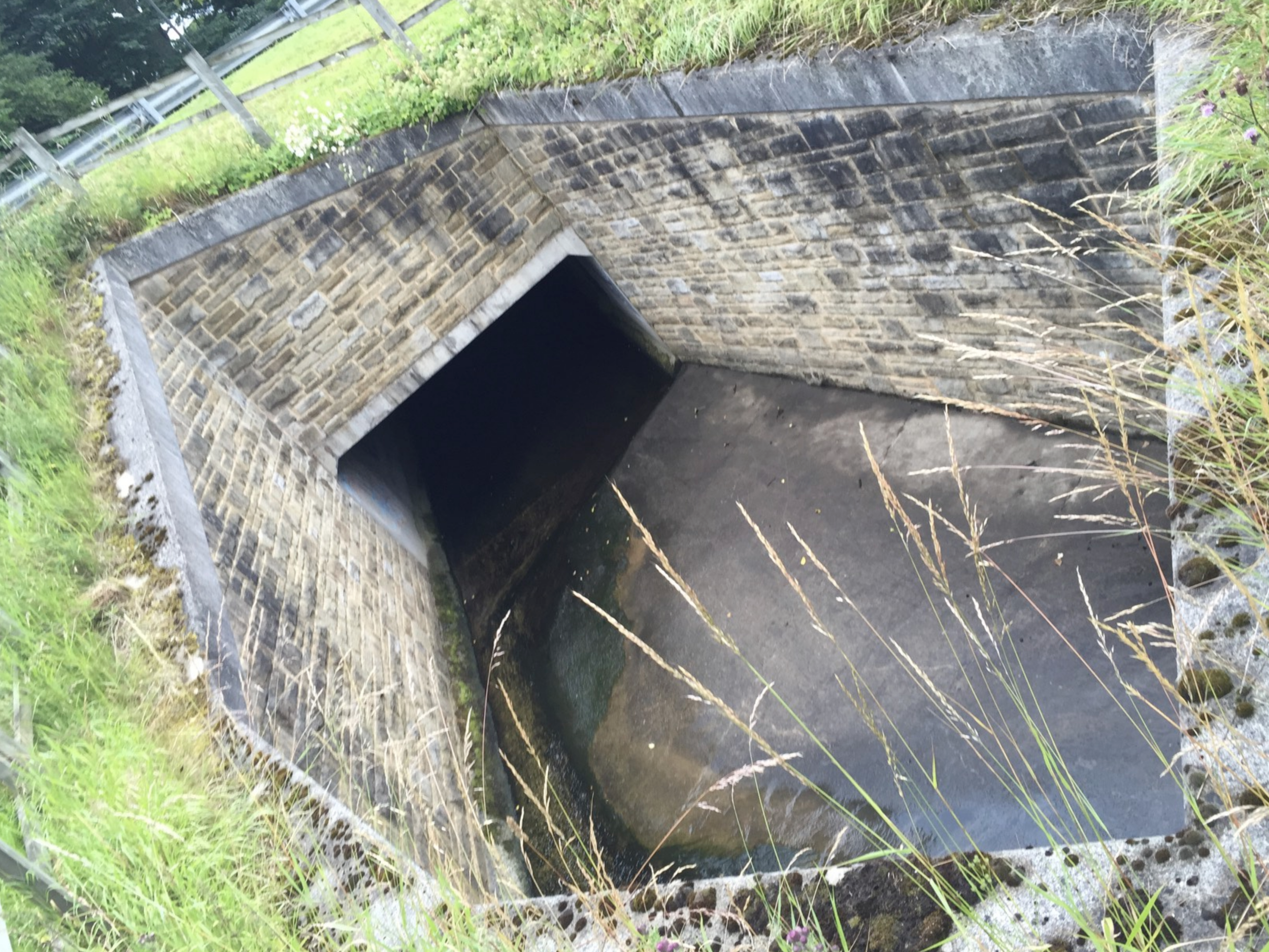Lost Rivers of Bradford – Cottingley Beck
Another lost river opportunity presented itself on a recent trip to Saltaire in West Yorkshire. I booked into a roadside hotel near Cottingley – a familiar from my The Unexplained reading days. There, in 1920, two cousins snipped pictures of fairies from a magazine, propped them up near a brook and photographed them as a joke. The results were accepted as genuine by adults and by the time the journos got hold of the pix, no backtracking was possible for the young girls. Sir Arthur Conan Doyle’s endorsement delivered the story directly into folklore for the next 60 years or so. Only when elderly did the culprits confess the caper.
This story is not really one of ‘are fairies real?’ but rather ‘why did people accept them?’ There is a contemporary parallel with modern meme / fave / like / please RT culture, with young photoshop whizzes tapping into our wooliest hopes and our darkest fears: see for reference the various post 9/11 smoke plume-dwelling demons. In the post Great War trauma, perhaps we needed something from a more innocent time to believe in again; Elsie and Frances were offering exactly that. The war itself quickly created more lost loved ones than Europe had ever experienced – their families all potential clients for the unscrupulous spiritualists of the day. Conan Doyle was one such customer. His endorsement may seem out of place given what we know about his most famous creation but we should remember that Sherlock was exactly that – a fictional character.
Interestingly, one of the Cottingley Fairies’ most vocal opponents was another Birmingham resident: John Francis Hall-Edwards – early adopter of X rays and all-round photographic expert.
I wanted to see the brook as it looked now and find what evidence there was of the fairies today. I mean, of course, evidence of their cultural resonance on the village’s fabric… though I was keeping an open mind.
The immediate problem was finding the location of Elsie’s house and the brook (or beck) behind it. Many sources quote the famous story but I could find only one local history website that included pictures of Elsie’s house. That site advises we respect the current owner’s privacy and helps us to do this by not revealing the address. However, Cottingley is small enough to allow the ardent sleuth to discover it by perseverance. Channelling the spirit of Holmes, I set out to determine the exact location that the fairy cut outs were made. The brook is too minor to appear on Google Maps’ waterways but an OS map I happened to have with me revealed the watery flow behind a series of houses. The pictures are described as being taken in the woods at the bottom of the garden (and perhaps this location gave rise to that particular fairy-realm phrase?) In the house photograph I could make out the door number, and reflected in the window, part of a street sign opposite: ‘N STREET’. Only one street on the map matches, and Google street view confirms that this is indeed the right place.
Loser Beck
The brook itself is first visible flowing through a concrete culvert off the dual carriageway. It is an unpromising start to this mysterious watercourse but immediately behind this is a flavour of those Edwardian years: dense woodland and a gently babbling rivulet snaking through the dark trees. Access looks unlikely. The first sign of Cottingley village is a ground level stone carved with the town’s name obscured by flowers… the next sign is buried in tree foliage. For a moment, it feels like Cottingley may have something to hide. But the next sign I see is for Cottingley Tires and with this prosaic roadside garage the illusion of mystery evaporates. Near here is the hospital, whose gates are adorned with silhouettes of the famous dancing fairy picture. The next clue references the brook, flowing beneath the road and behind a row of stone cottages. ‘Beckside Fisheries’ is the name: the local chip shop isn’t a ‘fishery’ but it does confirm that there is indeed a brook at the back. The house next door is (or was) called Brookside, just visible in faded painted letters. Various access points to the beck present themselves but I have no intention of trespassing or even appearing to be sight seeing. I wonder how many oddball tourists have made there way here over the years – the locals must surely learn to recognise such outsiders quickly. I try to look like I’m visiting an auntie on a nearby lane – a subtle but real skill. I can see that a metal fence has been erected along the line of low millstone grit walls – it looks like a recent, deliberate effort to keep people out of the beck. A cottage here is quietly named Fairy Dell, as is a nearby (post 1920) street.
The house itself is up for sale but otherwise unmarked. Further up from the cottage is a bridge crossing the brook, which is just visible through the depths of the dark woodland. A small boy plays alone on the steep grassy bank – in a small village such as this one can’t always find a play mate. By this point I’ve run out of village and head back to the hotel (via auntie’s). Later I go back online to look for the house for sale. Tepilo don’t miss a trick and make a big deal of the historic significance of the house, even leaving the mystery open for potential buyers.
Despite the confession in her twilight years, Frances Griffiths added another twist to the story when she insisted that although the photos were faked, they did really see fairies at the beck. Furthermore she maintained that one of the of the photographs did in fact capture real fairies in the background, their faces hidden amongst the grass.
I’m quietly pleased that Cottingley doesn’t ‘sell’ the fairies, but if you know what to look for, their presence can still be detected.
‘This agency stands flat-footed upon the ground, and there it must remain. The world is big enough for us. No ghosts need apply.’
Sherlock Holmes in The Adventure of the Sussex Vampire
Welcome to
Tale Gate
Fairy Liquid
Soap and Water





